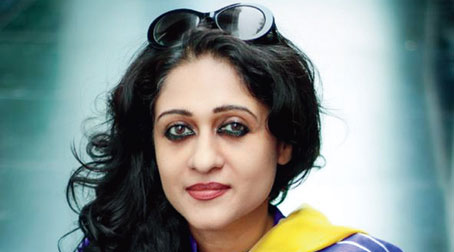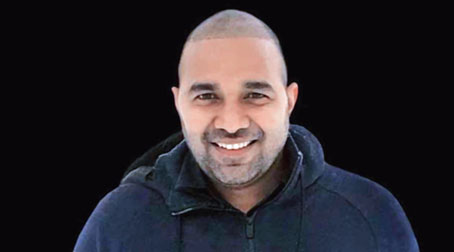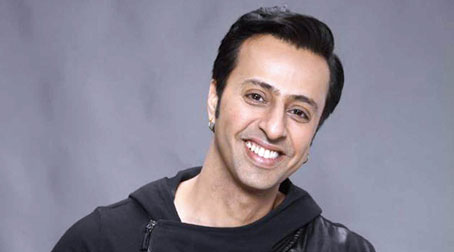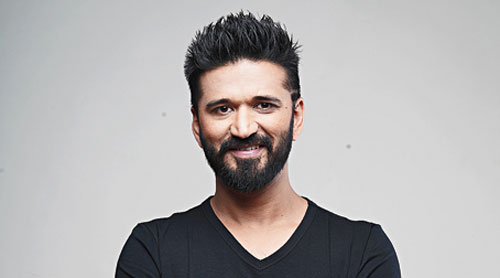Starting on a cheerful note with Aabha Hanjura’s rendition of her popular track Hukus bukus, the seventh episode of the web series The India Story Continues — Broadcasting: Music and Beyond — streamed live on YouTube and Facebook on September 26. Moderated by Nisha Narayanan, director and COO at 93.5 Red FM and 106.4 Magic FM, the panel comprised Amit Trivedi, Salim Merchant and Tarsame Mittal.
he talking point was the rise of independent music in our country and focused on the challenges and digital presence of the indie music scenario. While veterans like Mittal, Trivedi and Merchant enlightened us on the business angle and yesteryear stories of their work, Aabha shared her stories of interspersing language in her musical journey. The discussion was strewn with signature songs of the panellists and ended with the soulful performance of music artiste Goldie Sohel’s released and unreleased originals.

Nisha Narayanan Sourced by the Telegraph
The emerging forms
Nisha opened the panel discussion by initiating the discussion about independent music and non-film music…
Tarsame: Independent music is an artiste releasing his or her own music without any label. But in India, it doesn’t fit properly because Indian music is mainly film music. So, I personally like to use the word non-film music and when it is done by artistes independently it is independent music. When it is done by labels like us, the artistes do their own thing and have their own rights, and that is independent music for me.
Creating music for Self or Audience
Nisha: Is there enough creative space for experimenting?
Amit: It was easy earlier because I had no idea about how the business works. I was only reacting as an artiste and only creating music. It has to be a fine balance between art and commerce. Now that is affecting the way I experiment also.
Nisha: Do you create music for yourself or for your audience?
Amit: It is 50-50. Unless and until I enjoy doing what I am doing there’s no point. I know at the end of the day, business is about the audience. But then I am the consumer also, I am excited about it.
Nisha: Is balance a good thing? Shouldn’t you be a little revolutionary?
Amit: When I did Dev.D I had no idea about the sound because I was not listening to Bollywood music at that time. I used to listen to the radio on the way every day while driving and the music that was playing on the radio and whatever I was creating in the studio had no connection whatsoever. I had doubts about what I was doing. And I thought maybe it is going to be my first and last time. But it worked and my faith increased.
Salim: I don’t make music for the audience ever. Chak De! India and Kurbaan pushed us to do something so different. Even when we were doing Band Baaja Baaraat there was this special thing of doing a sangeet kind of music and I did Ainvayi ainvayi at that time, I just came up with a hook. I used to go to Delhi a lot of times, and my friends there and nobody really heard that sangeet type of music. The youngsters heard that music at the after-party which was drum and base or breakbeat. So I was like why can’t I do a song which has that. So, I made that song but the director refused. And one day I just got this song out for the producer and Aditya (Chopra) really loved the song. We are fortunate that the movies we did before had an indie vibe and had an independent spirit. Right now we are falling into a trap of a template... we are not experimenting with the structure.

Tarsame Mittal Sourced by the Telegraph
Challenges of Independent Music
Salim: Views! (Laughs) All the streaming sites are saying that in YouTube the video is not getting views! (Laughs)
Amit: Film music is a collaborative thing. But for the past three-four years, labels are taking over the scene.
Nisha: How are you going to break the whole thing?
Salim: It is broken.
Nisha: Of course the music labels that are coming are bringing in a lot more fragmentation into the music industry. But I am talking about individual song release. What challenges do you really face to make it a hit?
Tarsame: The biggest challenge is the economy of plays, if you have more money you can have more plays. Film has a lot of budget. Next is algorithms. If you are releasing with a really popular artist, the algorithm takes it up. You get more plays on radios or music channels. Nowadays music channels hardly play. More distribution and a rich network has to gradually build up.
Aabha: From the time I started eight years back, we had to really create an audience, especially for the kind of music that I was doing. I wanted to bring in a new language into the mainstream which was spoken by 0.02 per cent of the country. So it took a long time. I was an avid listener and consumer of alternate music as well. In festivals, I would listen to language representation from Rajasthani to Gujarati.
But Kashmiri was not even represented. I felt passionate towards it because I am Kashmiri but I grew up in north India, I wanted to put a lot of focus in the language. I was anyway creating something that is ultra niche. So my journey has been like playing for four people in a club to 14 to 40 to 400 to 4,000. It’s been very slow but it’s been very organic. I went from live to digital. I also sing Sufi folk music, so I built a live music career. But even today until a breakthrough song happens which was Hukus bukus... it took a long time in getting people to accept.
Importance of Views in the Digital Age
Salim: I don’t believe in it. I feel it’s terrible...but what is that number? Because earlier it used to be one million now it’s 10 million very soon it is going to be 100 million. I love to host a party but if I am paying people to come to that party then it’s stupid. If I am making music and I am putting it on channel, it is fantastic. But if I am paying people and buying Google ads, it just doesn’t make sense. Now it has become a standard. If you have released a video and got 26k views, it is shameful. I would actually rather value those 30,000 people who have actually listened and watched my video. It is great that when you release your music, the radio plays that music. If people like your music they will stream it anyway.
Amit: There are songs that are not doing well on YouTube at all but on streaming they have some great numbers. There is also an audio value to it that people are enjoying.
Salim: It has been my experience when we did Aashayein, there was no visual promo. Radio made it a hit. Same with Khudaya ve.
Tarsame: For any music label or any musician it is very difficult to make money through content. Audio, whether you like it or not is the biggest source of revenue for any musical content. Why people are so focused on audio streaming after play listening everybody's live is because streaming revenue is almost five times of YouTube.

Salim Merchant Sourced by the Telegraph
The Age of Co-existing
Tarsame:We can’t make a choice. We need both radio and streaming. Currently none of the labels or artistes look at radio as a revenue mechanism. We look at radio as a reach mechanism. But eventually when the radio plays out and people listen it on the audio streaming then we will make some money.
Nisha: It has to co-exist. But to be fair radio is now equally strong in the digital platform as well as social media. We cannot ignore digital. But some of the new songs that are being released, people are using influencers on social media to make it a hit. So are we falling prey to digital?
Salim: I have a very different outlook towards this. For me, influencers are also artistes. Even Salman Khan for me is an influencer. Just because he is a filmstar and someone is not... let’s not have that difference…. I feel each artiste has his own space.
Tarsame: I am also completely in favour of them because we keep talking of nepotism. But these are the platforms that have given power in the hands of every single talented person in this country.
Rise of Indie Regional Music
Nisha: There is a huge rise of Indie regional music as well. It is not just in Hindi. From different parts of the country, a lot of regional music is coming in and Hindi-speaking audience are also warming up to that music because it has a certain freshness attached to it, it has a different sound.
Amit: My first song was a Gujarati song. Organically it reached six million... there’s encouragement to do more now.
Aabha: I feel that there’s this culture of language. India is so diverse as a country, there are lots of artistes who really worked on this... it has been a personal experience. I have played this music across. We played at Jaipur Literature Festival. There are a lot of people from the audience who knew the song and there are now four million views organically. These people are from Ranchi or Jharkhand and they are trying to sing a Kashmiri song. Sometimes they mess up because it is so difficult to sing. But they try and for me as an artiste it is a huge gratification that our linguistic diversity, which is beautiful about our country... like nobody understands the language but it is such a huge hit song because it sounds cool.
A Road Less Travelled:
Nisha: Salim, please tell us about the Bhoomi project...
Salim: I always wanted to start a family of contributing artistes under the same umbrella... who will contribute towards the art of music. I hope I get writers and contributors to join the movement.










